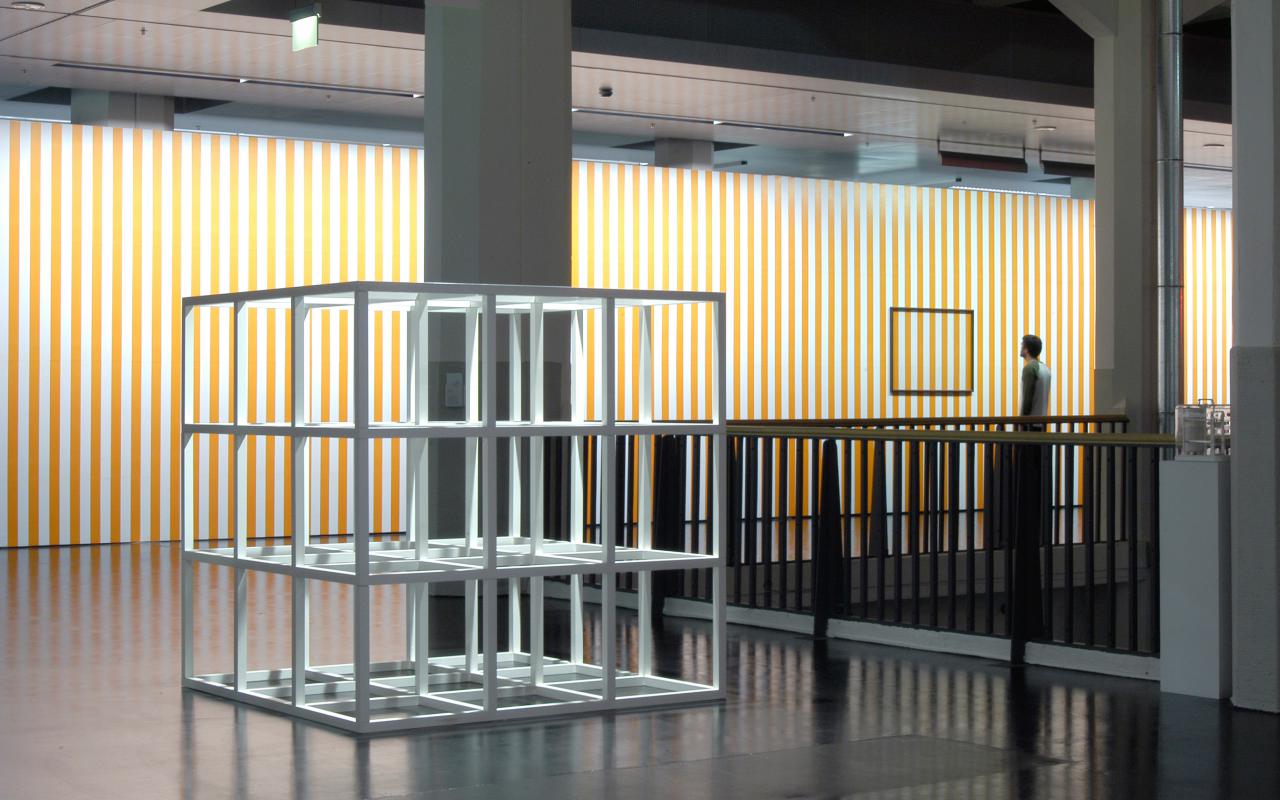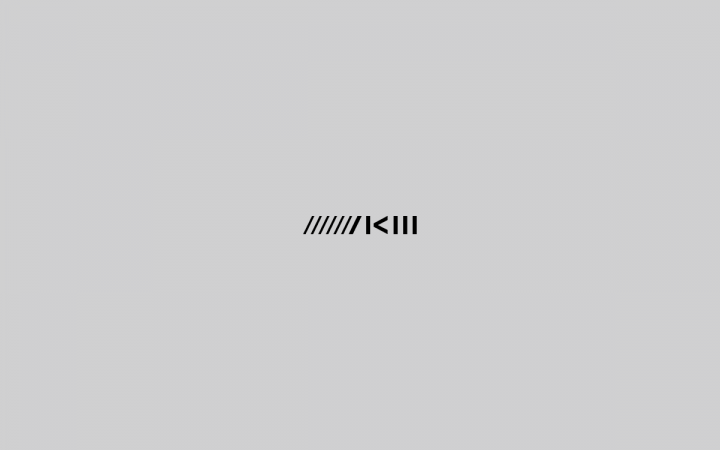Exit_Stepping out of the Picture

Fri, January 14, 2005 – Mon, October 03, 2005
The opening of the exhibition entitled »EXIT_Stepping Out Of The Picture« marks the reintegration of the Museum of New Art into the ZKM. The collection's first thematic exhibition shows works from the Boros, FER, Froehlich, Grässlin, Weishaupt und ZKM collections (formerly the ZKM_Museum of Contemporary Art). It focuses on a complex and fascinating aspect of Western art in the second half of the 20th century: the farewell to the picture.
In the late 1950s, when artists were still attempting to come to terms with the impact of the Second World War and the Cold War, there were signs of a fundamental irritation and radical questioning of traditional social and artistic values. Art increasingly came to be seen as a “response to reality” (Laszlo Glozer). In the quest for new myths the traditional form of the picture was no longer able to function on its own as a conveyor of messages. The picture medium had to be damaged, destroyed or denied before subsequently being expanded and made capable of crossing media boundaries. The medium itself ultimately became the conveyor of messages. This farewell to the picture was prepared by a number of Modernist artists, such as Kasimir Malewitsch and Piet Mondrian. In the second half of the 20th century, painters of the younger generation further reduced the contents of their pictures or made them more geometrical. Lucio Fontana began slicing up his monochrome pictures to illustrate his concept of space. Other artistic attacks on pictures followed. The variety of the materials used for this purpose increased, particularly those that had previously not been considered worthy of art, such as items of everyday use and rubbish.
Moving beyond the classical picture format, the separation of message and picture was extended to the artist’s body, to objects in the environment, to writing and light; in addition, performances and happenings began to gain a foothold in artistic circles. This underlined how successful the farewell to, or relinquishing of, the picture had become. In documenting key artistic positions on this paragon of Second Modernism, the ZKM_Museum of Contemporary Art provides a chronological survey of the questioning of traditional picture definitions, the emergence of competition between different media and the response to these important phase on the part of artists in the 1980s and 1990s right on into the new century. Visitors are guided through the exhibition in accordance with various thematic aspects and can experience for themselves the debunking of art - partly by audiovisual means - from the late 1950s up to the present day.
Other themes apart from the »demystification« of pictures include the extension of the content of pictures into space, the interdisciplinary nature of painting, writing and music, and social criticism. Documentary support for »EXIT_Stepping Out Of The Picture« comes in the form of the exhibition entitled »Right at the Beginning. Richter, Polke, Lueg & Kuttner«, taken over from the Zentralarchiv des internationalen Kunsthandels (ZADIK), Cologne, which shows letters and photographic materials.
Represented in »EXIT_Stepping Out Of The Picture« is Günter Uecker, an artist who not only uses nails as a ready-made material in his works - thereby moving beyond materials considered worthy of art - but also removes the boundaries between the picture and the object of the picture. In the top right-hand corner of the otherwise empty canvas of his work Corner there is a field of nails that explodes the dimensions of the picture medium as such. The exhibition also contains two works by Dan Flavin, an American light artist. Like other artists before him, he uses typical coloured or white fluorescent tubes for his light bodies - a prefabricated, industrial commodity, in other words - with which he has expanded the traditional concept of sculpture since the late 1950s, filling space with light and transfiguring it.
In the late 1950s, when artists were still attempting to come to terms with the impact of the Second World War and the Cold War, there were signs of a fundamental irritation and radical questioning of traditional social and artistic values. Art increasingly came to be seen as a “response to reality” (Laszlo Glozer). In the quest for new myths the traditional form of the picture was no longer able to function on its own as a conveyor of messages. The picture medium had to be damaged, destroyed or denied before subsequently being expanded and made capable of crossing media boundaries. The medium itself ultimately became the conveyor of messages. This farewell to the picture was prepared by a number of Modernist artists, such as Kasimir Malewitsch and Piet Mondrian. In the second half of the 20th century, painters of the younger generation further reduced the contents of their pictures or made them more geometrical. Lucio Fontana began slicing up his monochrome pictures to illustrate his concept of space. Other artistic attacks on pictures followed. The variety of the materials used for this purpose increased, particularly those that had previously not been considered worthy of art, such as items of everyday use and rubbish.
Moving beyond the classical picture format, the separation of message and picture was extended to the artist’s body, to objects in the environment, to writing and light; in addition, performances and happenings began to gain a foothold in artistic circles. This underlined how successful the farewell to, or relinquishing of, the picture had become. In documenting key artistic positions on this paragon of Second Modernism, the ZKM_Museum of Contemporary Art provides a chronological survey of the questioning of traditional picture definitions, the emergence of competition between different media and the response to these important phase on the part of artists in the 1980s and 1990s right on into the new century. Visitors are guided through the exhibition in accordance with various thematic aspects and can experience for themselves the debunking of art - partly by audiovisual means - from the late 1950s up to the present day.
Other themes apart from the »demystification« of pictures include the extension of the content of pictures into space, the interdisciplinary nature of painting, writing and music, and social criticism. Documentary support for »EXIT_Stepping Out Of The Picture« comes in the form of the exhibition entitled »Right at the Beginning. Richter, Polke, Lueg & Kuttner«, taken over from the Zentralarchiv des internationalen Kunsthandels (ZADIK), Cologne, which shows letters and photographic materials.
Represented in »EXIT_Stepping Out Of The Picture« is Günter Uecker, an artist who not only uses nails as a ready-made material in his works - thereby moving beyond materials considered worthy of art - but also removes the boundaries between the picture and the object of the picture. In the top right-hand corner of the otherwise empty canvas of his work Corner there is a field of nails that explodes the dimensions of the picture medium as such. The exhibition also contains two works by Dan Flavin, an American light artist. Like other artists before him, he uses typical coloured or white fluorescent tubes for his light bodies - a prefabricated, industrial commodity, in other words - with which he has expanded the traditional concept of sculpture since the late 1950s, filling space with light and transfiguring it.
- Credits
- Ingrid Leonie Severin (Curator)
- Yvonne Ziegler (Curator)
- Andreas F. Beitin (Curator)
- Exhibitions team
- Rainer Gabler (technical participation)
Roland Haas (technical participation)
Martin Häberle (technical project management)
Marianne Meister (registrar) - Organization / Institution
- ZKM | Museum für Neue Kunst

